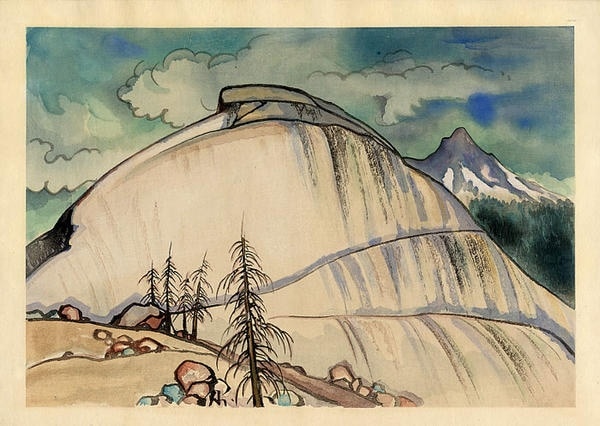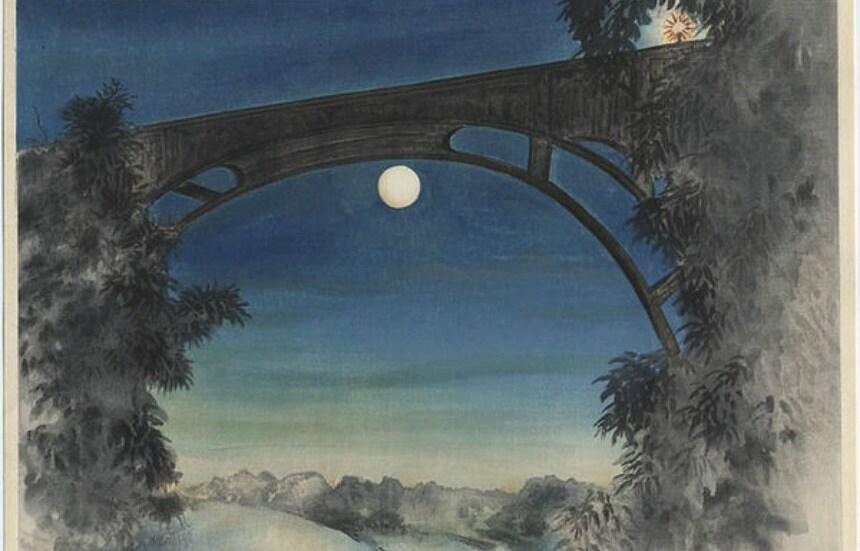Ukiyo-e in Californ-i-ay

http://en.rocketnews24.com/2015/11/20/see-america-through-the-eyes-of-chiura-obata-a-japanese-artist-from-the-early-1900s/
Obata was born in 1885 in Okayama Prefecture, Japan. He started learning traditional Japanese sumi-e painting at the age of seven, and as a teenager he apprenticed with several well-known artists in Tokyo, where he got his first taste of Western art styles.
At the age of 17 in 1903, Obata left Japan for the United States. He arrived in California, where he worked as an illustrator and designer. Notably, he started painting landscapes throughout California, using traditional Japanese methods like this rendition of Dana Creek in Yosemite Park. His paintings blew the minds of Western artists at the time, and he was appointed as an instructor in the Art Department at the University of California, Berkeley in 1932.
http://en.rocketnews24.com/2015/11/20/see-america-through-the-eyes-of-chiura-obata-a-japanese-artist-from-the-early-1900s/
But soon after, Obata’s life hit a bump. During World War II, Obata, his wife, and over 100,000 other Japanese-Americans were forced into internment camps. But even there, Obata did his best to stay positive. He opened up an art school inside the relocation center he was assigned to, and there he helped hundreds of other prisoners find some hope and joy amid their confinement. The picture above, entitled Landslide, was created right after the bombing of Pearl Harbor.
After World War II, Obata was reinstated at UC Berkeley and promoted to associate professor of Art. In 1953 he became a naturalized U.S. citizen, and in 1965 he received the Order of the Sacred Treasure, 5th Class, Emperor’s Award, for his work helping to improve cultural understanding between the United States and Japan. He continued teaching art and leading tours of Americans to Japan until he died in 1975 at age 90.
Read full story: en.rocketnews24.com




